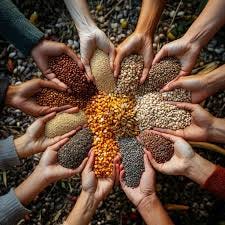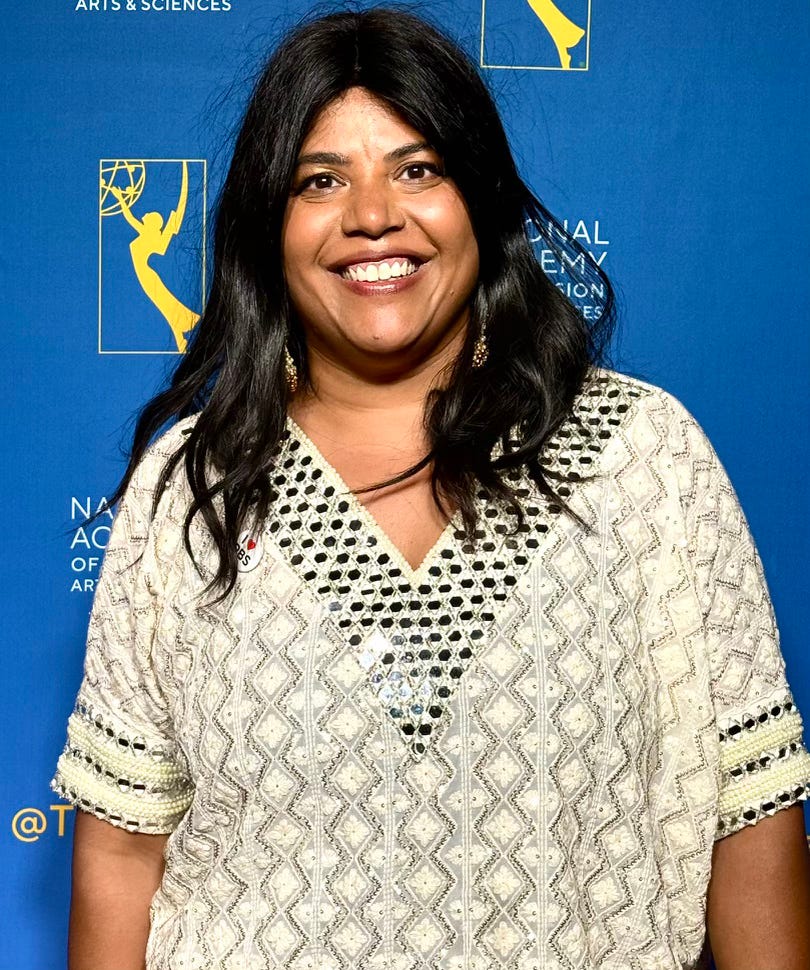Growing up , every morning, my parents would play the same audio cassettes with the same shabads. Mostly, it was Bhai Harjinder Singh. Sometimes, it would be others. But mostly, it was him.
As I grew older and met other Sikhs from around the country, I learned that many of us had the same soundtrack to our childhoods. Isn’t it remarkable that we had such shared experiences in spite of our disparate upbringings?
Over the years, as we learned kirtan, we would often gravitate to learning and singing the shabads we had grown up listening to. One of my favorites was this shabad.
I didn’t know what it meant really, though some of the words were familiar. But as I’ve grown older, and as I’ve come to appreciate how much our communities shape and support us, I’ve come to love this shabad more and more.
ਵਡਭਾਗੀ ਹਰਿ ਸੰਗਤਿ ਪਾਵਹਿ ॥
ਭਾਗਹੀਨ ਭ੍ਰਮਿ ਚੋਟਾ ਖਾਵਹਿ ॥
ਬਿਨੁ ਭਾਗਾ ਸਤਸੰਗੁ ਨ ਲਭੈ ਬਿਨੁ ਸੰਗਤਿ ਮੈਲੁ ਭਰੀਜੈ ਜੀਉ ॥੩॥
With great fortune, I’ve found a divine community.
The unfortunate ones remain in doubt and suffering.
Without fortune, the true community isn’t found; and without community, we become stained with filth.
The value of community seems so clear to me, especially now that we’re raising these young girls and noticing how much our social circles influence who we are and how we live. And yet, it’s also true that finding people with the same values and building those communities is not a given. It takes real commitment, hard work, and—as Guru Ramdas Sahib points out—good fortune.
It’s something we think about often now. Who are the people we surround ourselves with and build relationships with. And one of the people who I’ve observed doing this with real intention and purpose is my friend Anurima Bhargava.
I wanted to learn how and why she built her own communities, so I invited her to tell me all her secrets on my podcast. I’m pasting below an excerpt from our conversation. I’m also linking here to listen to the full interview with Anurima Bhargava on Wisdom & Practice.
Anurima Bhargava:
I do think that the most powerful way is to show up and to be able to, with all your senses, show the ways in which we are all intertwined. And we're intertwined from the start. When you're standing next to someone, you don’t have to evidence each other’s humanity, because you can feel it, you can see it, you can revel in it in a different kind of way.
And I think we are at a moment where we’re trying to evidence humanity. We're trying to evidence people’s pain, what it is that they’re going through, how it is that they see the world. Whether that’s how we process the shame, the guilt, the fear, you know, all of the things that I feel are so prevalent right now.
And the ways in which people are trying to get us to engage with one another, rather than just having a sense of what it means to sit, or wander, or dance. If I had my druthers, that’s what I’d be doing. Something that’s much more collective.
Simran Jeet Singh:
As I’m listening to you, I’m thinking about the nature of family and community. And if we take a more macro view on it, the temperature in our nation and across the world seems to be rising every day. And it’s creating more disdain and more distance within our communities and even in our own families.
So to get a sense from you, what does a healthy community look like? And what are some of the ingredients you think make for a healthy community?
Anurima Bhargava: As a civil rights answer: a healthy community has to be one in which the thing we’re most focused on is whether we are well, whether we are safe, whether we have a sense of who’s part of our community, and whether we have a community that embraces and celebrates and finds ways to spend time on the stories that bring us together—and that we can find ourselves in. Those are the stories we’re trying to make together, but they’re also the stories we’re trying to tell together.
There’s this idea that the first thing on our list should be: do we have a space? And it doesn’t have to be a big one. Actually, sometimes I think it’s better when it’s small, you know, a space to live, and sleep, and rest together. And that we think much more about: how do we prevent ourselves from getting hurt? How do we prevent ourselves from getting sick and feeling pain? You know, rather than trying to run really fast to fix it on the back end, we catalyze something, and then we all sustain it together. And it's not about a few people holding the community together. It's about a community where everyone feels like they have some stake in making it last for as long as possible.
A healthy community has to be one in which people feel like they are truly a part of it. And, first and foremost to me, this sense that a select group of leaders are the ones defining or creating community...that’s not it. You know, I thought about this a lot during COVID. You can feel as proximate to the person on the other side of the world as to someone down the street.
So the question of community–and a healthy one–is not necessarily about distance. Although I think it’s always better if we’re closer to one another. The closer and more grimy and close-up we are, the better, I think.
But I also think community has to be something that doesn’t feel like hard work. It should be a place where you don’t have to check a whole bunch of boxes to be part of it. And you don’t have to keep working really hard to stay in it, because it’s a place where you come as you are, and you’re valued for what you bring.
So that’s a very long answer to your question about what a healthy community is. But I think where I end up is this: A healthy community is one in which there is constant discovery. And there is a collective sense that, at least from the beginning, everyone can belong. And we don’t start with the idea that there are weeds. We start from the idea that we’re all seeds—somewhat figuring this out together.
Click here to listen to the full interview with Anurima Bhargava on Wisdom & Practice.



